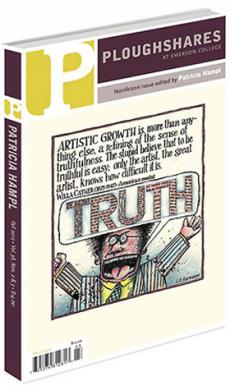Introduction
When you visit the statue of Montaigne in Paris, you find him amidst overgrown greenery, almost sequestered in the bushes across from the Sorbonne, as if preferring, in bronze, the margin he chose in life. The first thing you notice is his shoe. Even at night, when I came upon him, the shoe emerges first, golden against the dusky bronze of his casually seated self, cross-legged, bending forward as if to catch what you might be saying there on the sidewalk.
People rub the shoe for luck or maybe out of affection. A shoe-rub is said to ensure a good exam result. It glows from all this human touch, an elegant sixteenth-century Mary Jane dancing slipper, blushing from generations of twentieth-century fondling. The sculptor, Paul Landowski, is better known for his gigantic 1931 Flash Gordon statue of Christ the Redeemer overlooking Rio de Janeiro. Montaigne’s statue was done two years later, in 1933, perhaps to commemorate the four hundredth anniversary of his birth in 1533.
Something of the dandy about that shoe. Then you notice the face, surprisingly intent, looking back at you. The face of a man who appreciates the finer things, but is wryly amused by this weakness for pleasure, not haunted by his appetites. Landowski has given Montaigne a twentieth-century face, nonchalant, worldly, warm—almost an American face. A humanist face. This Montaigne, like the one I’ve been reading in recent years, sees it all and accepts it all in advance—the “all” of human perversity and contradiction played out on the field of avidity and longing.
It was raining that night, and though I’m urging a visit to the statue as if to a shrine, I didn’t visit it. I just happened upon it, running late, trying to locate a fish restaurant recommended by a friend who knows Paris. Dripping in his leafy bower by the university, gleaming from the wet—or maybe because I’d been reading him, living with his sinuous sentences in my head, and had no idea such a statue existed—this bronze Montaigne had something of the apparition about him. Like Whitman, another eccentric of the first person voice, he was loafing by the side of the road.
Out with the iPhone. Snap snap. Got the shoe. Didn’t, couldn’t quite, get the face. I had made an earlier pilgrimage to the famous tower on the chateau property near Bordeaux, had stood alone in the rounded room, imagined it once ringed with books, the stony enclosure where he devised his pieces, some shorter than a page, some long enough to make a chapbook, the writing he called his essais. He had refused to outfit this study with a fireplace (imagine the cold in winter) in order to safeguard his precious library.
I had checked out as well the adjacent alcove where he did allow a little fireplace, a cramped space to warm himself. On the walls I made out what was left of the painted frescoes (naked nymphs and godlets mostly, bundles of chipped floral decor) and the graffiti of earlier visitors—boldly scrawled Emma 1882 and Pierre 1920, and someone whose name or message I couldn’t decipher, the date 1989, the most recent I found.
I looked out the window of the alcove to experience (or think I was experiencing) his view. May, a great blossoming marronnier, part of an allée of chestnut trees marshaled along a gravel roadway leading to the tower. Nearer, just below, a triangular untended parterre garden where I imagined herbs (surely he ate well—he tells us he loved rich sauces, delicately flavored). I turned back toward the main room, his writing room, intending to take some descriptive notes, hoping for an insight for the book I was—I am—writing (an earnest essayist acting the part). With this in mind, turning quickly, gaze angled down to my notebook, I misjudged the space (an earlier century, a smaller scale) and smacked my head into the stone wall.
You do see stars. Or bits of white, spinning, that you could think of as stars.
Then, in my bell-ringing, star-shooting brain, I remembered that Montaigne had whacked his head too, colliding with another rider, knocked semiconscious from his horse as he rode his wooded property. He was taken for dead as his men carried him, insensible, back to the chateau. It is one of the few recognizably “memoiristic” vignettes in the Essais, a scrupulous reconstruction of this pivotal autobiographical episode, a bit of story in the midst of all his pages of musing, pondering, reflecting, wondering—what used to be called philosophizing.
Why did he honor this moment, so uncharacteristically, with narrative? Because, no doubt, it was a near-death experience. But even more, it was that most literary of experiences—unbiddable, decisive—the pivotal event that allowed him to pierce to the core of the creative imagination, perhaps for the first time. In being knocked off his horse, Montaigne experienced the doubleness necessary to empower personally voiced writing—maybe any writing. He experienced the fall—but he also observed the experience. Both, in separate but related strands of consciousness. The shock of this double register galvanized him to note the parallels of experience and observation. It was a kind of conversion moment. (No wonder that most notorious of conversions—St. Paul’s—is often represented as a fall from his horse. Neither the fall nor the horse is mentioned in the Bible, but this is the standard image of his change of heart, as if the violence of being knocked down from a height were the only way to express it adequately. In a sense, Paul’s fall is the spark moment of Christianity, a tumble from a smooth power ride, a thump out of self into a vision of a new world order.)
You get knocked off balance, off your assumptions. You see stars. Or what you take for stars. Your life changes, is changed. Even in our handy cliché, we routinely speak of being struck by this or that. The point is you see—a fresh kind of seeing that feels accurate because the self is not, for once, a subject you lug around, a slave to experience it must either simply endure or enjoy. It is revealed as an instrument you can use to render—if not “reality,” then the experience of reality. The poetry of experience fastens to the reportage of the world.
To express accurately your experience you must, paradoxically, be knocked out of yourself—knocked out of the inevitable narcissism and egotism that is our narrative lot. This quicksilver experience has been given, by literature and psychology, the lackluster label detachment. Or as Keats called it—also fastening on an unwieldy phrase—Negative Capability. It is impossible to corral the experience in a name, a term, but once felt, there is nothing—not even love—to compare.
Montaigne’s younger brother had been hit on the head too—a tennis ball to the temple. He didn’t experience (so far as we know) detachment. He died of his blow (in the sixteenth century, tennis balls were made of wood). So perhaps Montaigne had an astonished, even slightly grateful/guilty sense of dumb luck in surviving his fall, because, unlike his brother, he “came to.” But surely he registered as well—his description of the experience proves this—the significance of his head wound: it gave him a new, enlarged consciousness. In his essais he found the purpose of this self: to see and then to say.
The personal essay was born of that smack upside the head.
It is a cruel irony (is there any other kind?) that Montaigne’s purposely evasive, even sassy, word for his writings—essais—has become that dread-dreary literary term, a word associated with Freshman English, the term paper, the school “theme.” Is cigarette smoking harmful to your health? Discuss. Welcome back to school, children—describe your summer vacation. And just try to tell an agent or editor who has professed to admire your novel that you have “a book of essays” in the drawer. It has long been the genre that dares not speak its name in the literary marketplace.
Not Montaigne’s fault. His book was an immediate bestseller. He thought he had decolonized writing, liberating it (or at least himself) from literary formality, to write freely—wild, untamed, eccentric, the last thing we think of when we hear the word “essay,” that domesticated homework pet. He could just as easily have called his pieces his thingamajigs, and in fact his use of the word essais was meant to be just that, offhand, elusive, and undefined. The New Yorker’s old term for its front-of-the-book shorts—casuals—captures more what he had in mind in his attempt (that word! attempt, try, essai) to renew the springs of the first person voice bounding across the field of what we keep calling, against all the evidence, reality. But “reality” and individual experience are exactly what smack together (in the head, then on the page) in the essay. The personal and the public find perfect register—for the length of the thing, the length of the essai, the try.
Americans, in particular, love the first person voice. It’s no coincidence that our greatest poem is “Song of Myself.” We also seem to favor first person narrators for our classic novels—Call me Ishmael… You don’t know about me without you have read a book by the name of The Adventures of Tom Sawyer; but that ain’t no matter… After Gatsby’s death the East was haunted for me like that, distorted beyond my eyes’ power of correction. So when the blue smoke of brittle leaves was in the air and the wind blew the wet laundry stiff on the line I decided to come back home…
Or maybe we don’t “love” the personal voice—we just trust it. It feels authentic to us, a people given the charge in our founding document to pursue happiness, always a singular enterprise. It may be our greatest fiction—to believe the personal voice is more “authentic” than other narrative modes. We’ll take it, most of the time, over “omniscience.” Not only because we are a notoriously self-regarding people, but because the first person voice opens the narrative door to speculation and reflection. Not to knowing, but to wondering. Perhaps we don’t just want a story. We want the yakkety-yak of how it feels, how it seems. We want the story of thinking. How much of Moby-Dick is “story,” and how much a vast tract, an ocean of essay, waves and swells of speculation attached to the adventure tale of the great white whale?
This is my letter to the world that never wrote to me—another poetic parent of the personal voice, speaking as usual in her sidelong way (Tell the truth, but tell it slant).
Famously, rather coquettishly, Dickinson also said, I’m Nobody! Who are you? That apparent self-revelation (really a self-screening) and its waggish question display the economy shared by the personal voice in lyric poetry and the personal essay (two forms up to the same business). Of course you’re nobody (so am I). But that fragile voice reveals more than a self. It holds the mirror up—not to itself but to the world. The essay is a solo dance, a private pirouette, its glowing footstep emerging onto the public street.

